21 years of the Slayer: How Buffy defined a generation of TV and movies
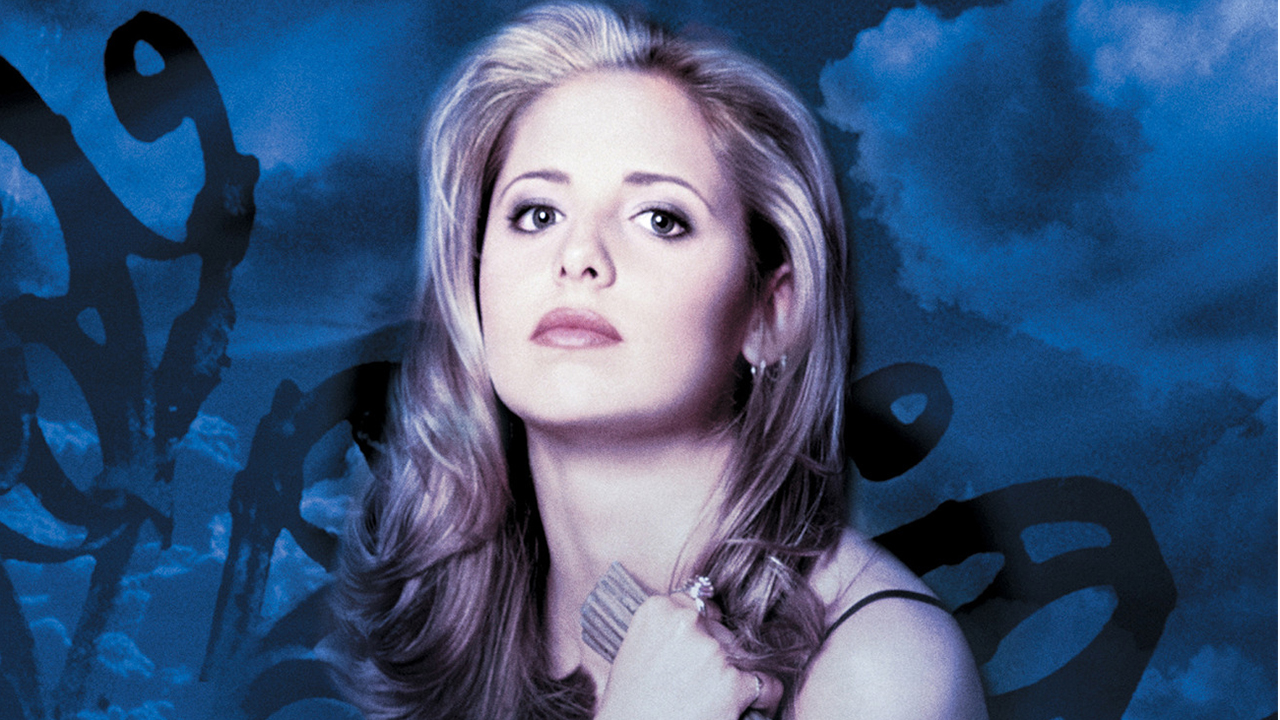
Into every generation a Slayer is born… so said Giles in the very first episode of Buffy the Vampire Slayer, 21 years ago. It was our first (technically second, if you count the movie) introduction to a girl who would change the world of TV and film. Joss Whedon’s creation would not only go on to become one of the most successful series of all time, but it would help define the generation of TV and movies that came after it. Without Buffy, we’d have fewer female action heroes, smaller movie universes, and a very different TV horror genre. You could kiss goodbye to your Veronica Mars, your MCUs (as you know it), and your Supernaturals, and while it’s easy to look back now and see how a pretty blonde girl fighting monsters would one day become such a huge pop culture icon, back in the early ‘90s no-one really noticed Buffy at all.
Let’s talk about the thing none of us really want to acknowledge: the movie. In 1992 Buffy the Vampire Slayer made her debut in a feature length film, and while it went on to make decent box office returns, it doesn’t really compare to the Buffy we know and love today. Camp, cheap-looking, and utterly forgettable, creator Whedon was extremely disappointed with the final interpretation of his cheerleader vs vampires story. After the premiere, Whedon’s wife suggested that he might have a chance later down the line to tell the story of Buffy the way he wanted. He remembers telling her, “Ha ha ha, you little naive fool. It doesn’t work that way. That’ll never happen.” A few years later Whedon was approached by Sandollar Productions’ Gail Berman to develop Buffy into a TV series and together the pair resurrected the story of the Slayer and eventually made a deal with network WB. On March 10, 1997 the first two episodes of Buffy the Vampire Slayer aired together, marking the start of a seven season run, which would see the Slayer become a household name.
She who hangs out a lot in cemeteries
It would be a long time before Buffy would get its well-deserved acclaim (its first few seasons, while gaining acceptable audience numbers for the relatively small WB, could never compete with big-hitters such as The X-Files), but the groundwork was laid in those early days. Most importantly, with the portrayal of its lead character - the right way, this time.
By traditional TV tropes, Buffy - a pretty blonde high school teenager - shouldn’t have survived the first episode. In fact, that’s how Whedon first came up with the idea for the Slayer. “The idea… came from seeing too many blondes walking into dark alleyways and being killed,” Whedon explained in his biography Geek King of the Universe. “I wanted, just once, for her to fight back… and kick his ass.” Everything about the main character stemmed from this one idea, even her name: “There is no way you could hear the name Buffy and think, ‘This is an important person,’” Whedon explains. “To juxtapose that with Vampire Slayer, just felt like… a B movie. But a B movie that had something more going on.”
This is the key to the popularity of the character. She balances the dual personalities of the high school girl and the Slayer. You’ll often find Buffy talking about boys or commenting on her hair, before trotting off to stop yet another demon attack. This challenged traditional stereotypes by showing that not only could a character be more than one thing, she could be two juxtaposed things in a believable way. Buffy was no less credible as a fighter because she was female, and this was something that appealed to audiences who were desperate to see a hero they could relate to. “It’s not only that she’s powerful, but she’s powerful while being very human,” explains Rhonda Wilcox, editor of Slayage: The Journal of Whedon Studies. “She’s not a simplistic ‘always successful’ worry-free kind of hero. She’s someone that people can relate to.”
This is why Buffy’s fan-base is made up of far more than teenage girls. It’s true that having a show featuring a strong female lead did wonders for female representation in the industry (as well as having a positive impact on its audience), but more importantly, Buffy proved that audiences of all genders, ages, and backgrounds could relate to a lead character such as this, which paved the way for similar heroes. James Marsters, who played Spike in six seasons of Buffy, says this was one of the reasons the show was so successful: “Even someone who is, say, 60-years-old can watch Buffy and say ‘You’re right – that’s me too! I’m trying not to give up on the world every day even at the age of 60!’ And I think that’s why it resonates.” Amy Pascale, author of Joss Whedon: Geek King of the Universe - A Biography, agrees: “[It] was stories about what people went through, and it just happened to be led by a teenage girl. And if you could buy into that then you bought into everything, because she was really, really phenomenal and she was really, really strong.”
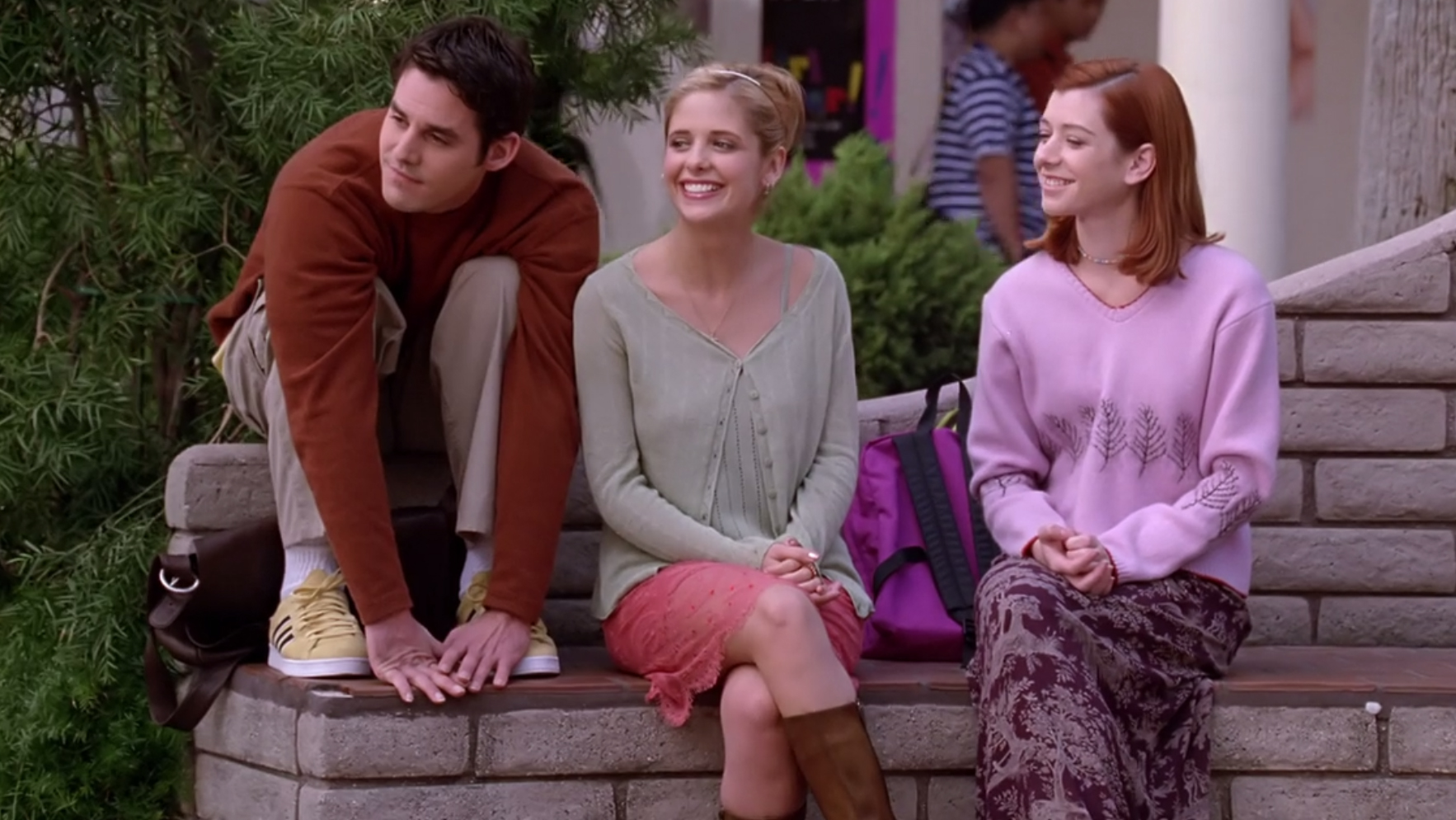
It’s a trend that has grown into fruition in recent years - the strong female hero - and given us such characters as Veronica Mars, Jessica Jones, and Rose Tyler. Although maybe not always as you’d think: “Rose isn’t another Buffy – she’s a reaction to Buffy,” Doctor Who showrunner Russell T Davies tells SFX magazine. “Buffy was the most special girl in the world, the Chosen One, but Rose is the opposite – she literally gives a speech in the first episode saying the only thing she’s ever won is the bronze for gymnastics in junior school. She’s deliberately the polar opposite of Buffy, but nonetheless occupying the same space on screen.” The popularity of Buffy is what cleared this space in TV for future shows.
Weekly digests, tales from the communities you love, and more
You can see this trend in movies too, with the likes of Twilight’s Bella Swan and The Hunger Games’ Katniss Everdeen reaching new heights. No matter what your issues with The Twilight Saga (and I do have many), there’s no doubting the fact that it centres on a young teenage girl who makes her own decisions and holds firm to them. Oh, and in a supernatural vampire setting as well. Whereas Katniss not only represents a true female action hero many can relate to, but also mirrors Buffy’s unwanted responsibility. When she volunteers as Tribute, she does it to save her sister - “If that’s not a Buffy thing to say, I don’t know what is,” says Pascale - but in doing so, she kickstarts a revolution that will ultimately change her world for the better, and she spends the rest of the story being the reluctant ‘Chosen One’. She knows it’s what’s right, but she never wanted to be the one to do it.
Whether a character had superpowers or not (and regardless of gender), their ability to rise up and become the hero of the story is a hallmark of Buffy. While Miss Summers challenged every trope she could get her hands on, so did the rest of the cast. “That’s the beauty of all the new characters Joss created to populate his Buffy retelling,” explains Pascale. “Each one fell into a typical social role while pushing against it, and their struggles to find their own path gave audiences, Joss himself, and even the show’s actors so many way to connect with the story.”
Willow may be the shy geek, but she’s also infectiously happy and always looks on the bright side. Xander is the class clown who’s hung up on Buffy, but his quick wit and loyalty never fail him. Giles takes on the role of the stuffy adult mentor, but his story isn’t over, he still has his own challenges to tackle. Cordelia is the vain popular girl hiding her own pain and insecurities, but she never doubts herself. Even Joyce, Buffy’s Mum, fights against her usual role as the parent who has no idea what’s going on (Whedon always hated shows that portrayed adults as clueless). Every character in Buffy the Vampire Slayer is recognisable and relatable while still fighting stereotypical norms and that’s ultimately what made them so popular and yet so groundbreaking.
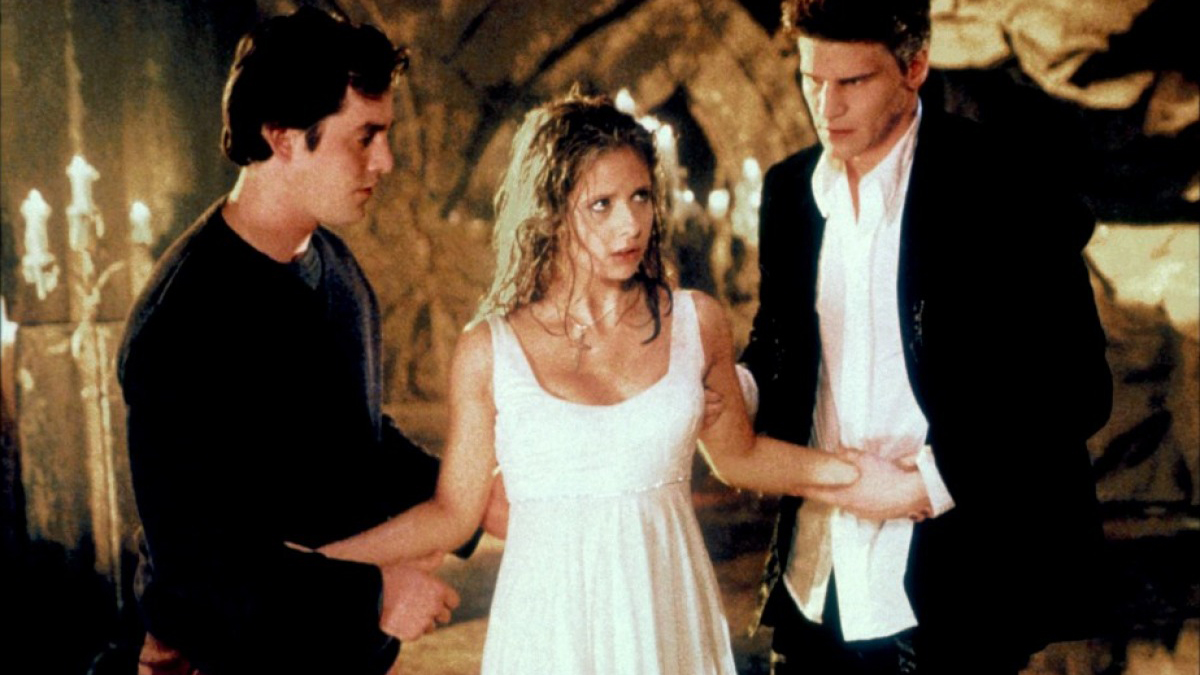
The hardest thing in this world is to live in it
This is something that is reflected in Buffy’s storylines too. The key for Whedon was making sure that every aspect of Buffy mattered. Yes, she might be fighting a vampire but the way she fights, the way she wins (or doesn’t), is dependent on some other key element of her story. This would become known as finding the “Buffy of it” in the writer’s room and anything which didn’t add to the heart of the episode didn’t go in.
Working in this way allowed the Buffy storytellers to tackle real-life issues in an incredibly effective yet entertaining way. “Whedon and company… respected the audience and expected them to be able to think and comprehend at an in-depth level,” says Wilcox. “So you can look at any given episode and see far more in it the second, third, and fourth time that you watch it.” Sometimes an entire episode would be a metaphor, such as season 1’s Out of Mind, Out of Sight, about a high schooler who’s ignored so much she turns invisible. Most of us have felt that way at some point or another, especially in high school, and audiences could now process those feelings of rejection and helplessness through Marcie’s story. It was so effective that after it aired the producers received a letter from an agoraphobic lawyer in her 40s, saying “last night’s show gave me the courage to walk out the door of my house.”
Pretty much every episode of Buffy had a hidden message like this, but it was also the fact that even the smallest moments had something to say. Remember in the season 1 premiere when Buffy is getting ready to go to the Bronze? She’s trying to pick out an outfit and stands in front of the mirror comparing two very different looks. "Hi! I'm an enormous slut!” She says, holding up one dress. “Hello. Would you like a copy of 'The Watchtower'?" She says, holding up the other. It’s a tiny moment, but one that tells us a lot about this new character, as well as saying a lot about what it means to be a teenage girl. Buffy is packed with clever moments like this. Re-watch any episode and you’ll be amazed how much of the show has something genuinely important to say.
This theme continues throughout Buffy, especially once the ‘monster of the week’ plot became the norm. In season 2, Whedon looked for ways to keep his story interesting and once again turned to not the monsters, but the heart of Buffy. In Innocence, Whedon took an experience that happens to most girls - a boy turning on them after they have sex - and crafted it into one of the best episodes of Buffy ever to air. After Buffy and Angel make love for the first time Angel experiences a moment of true happiness lifting his gypsy curse and turning him back into the evil Angelus. Before Buffy realises what’s happened, Angelus taunts her with a sarcastic ‘It’s not you, it’s me’ speech. She’s devastated and it marked a shift in the show which up until then had portrayed Buffy as fairly unbreakable. But there was an important reason for this: “You have to make sure the stakes are something more than life and death,” Whedon explains. “You have to make sure that the stakes have to do with an experience that will break this person, will twist this person,” he says. “Luckily, with Sarah [Michelle Gellar] we could go there. Breaking her heart was going to be way, way more terrifying than piercing it.”
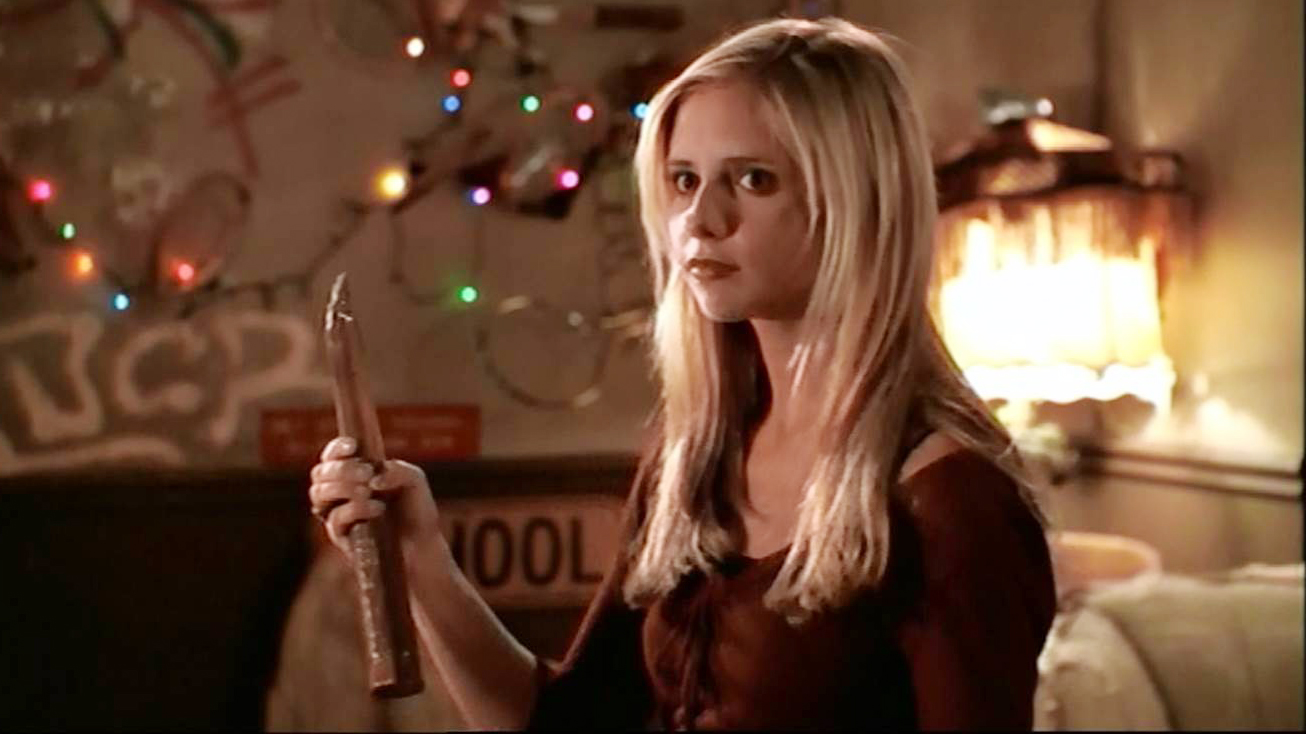
In fact, some of the best Buffy storylines are the ones which have nothing at all to do with the show’s fantasy setting. Most notably, season 5’s The Body - which featured the death of Buffy’s Mum Joyce - is widely regarded as one of the best TV episodes of all time, never mind just Buffy, and it’s almost completely devoid of any monsters. It’s not a story about the Slayer, it’s about a young woman losing her mum. The same can be said of the Willow-Tara storyline, which sees Willow strike up a close friendship with a fellow Wiccan at UC Sunnydale in season 4. It isn’t until Oz’s return in episode 19, New Moon Rising (he left earlier in the season to learn how to control his werewolf side), that Willow realises she loves Tara and the pair officially get together, but it was an important milestone in TV and one which has nothing to do with the fact they’re witches. “It was the first series that had what I would call a romance between two lesbian women,” says Wilcox. “Rather than just a quickie, exploitative kind of visually titillating sexual encounter, there was actually a long-term romance that was depicted with sensitivity and real feeling.”
This character development caused a lot of controversy at the time from both homophobic viewers (who couldn’t believe one of the core three characters had ‘turned gay’) and the gay community (who didn’t think they were ‘gay enough’ - the pair wouldn't kiss on screen until season 5, episode 16), but to Whedon, it wasn’t about making a statement. “To me, having a character that is open to exploring their sexuality is about the same as having a girl hero - just something natural and cool,” he posted on Buffy fansite The Bronze in 2000 shortly after the episode aired. “I'm not trying to make a political statement… My show is about emotion. Love is the most powerful, messy, delightful, and dangerous emotion… Willow's in love.” There’s still a long way to go in terms of representation in TV and film, but the fact that Orphan Black, Black Sails, and Orange is the New Black all have multiple homosexual characters who are so much more than their sexuality is something we can, at least in part, thank Buffy for.
This effort to find the heart of things, not only led to some of the most innovative and best TV we’ve ever seen - who would have thought an episode where everyone sings (Once More With Feeling) or where no speaks at all (Hush) would ever work? - but it’s also what would make fantasy, and even sci-fi, more mainstream than ever before. Fantasy was still a really hard sell to mainstream audiences in the ‘90s despite the success of shows like The X Files, Star Trek, and Twin Peaks, and a fantasy show set in high school? There was a reason Buffy was treated with such condescension for a long time. “People who never watched Buffy or never understood it [would say] ‘Oh Buffy, was that a kids’ show?’” David Greenwalt says in Geek King of the Universe. “They didn’t get it. The way Joss can guide a character through their paces - you won’t see it anywhere else. The way he wrings them out and gives them humanity, you want to cry with them and you want to laugh. You root for them-it’s like an old-fashioned movie experience watching his characters on screen.”
It’s something he’s replicated within the MCU. Given the seemingly impossible task of bringing together six very different characters (four of whom had their own very distinct solo movie franchises) into one movie, which needed to introduce the Avengers and set up a wider cinematic universe, as well as be an entertaining action movie with a beginning, middle, and end, Whedon never lost sight of the heart of the story. “You can feel that influence of taking superheroes and making them complicated so that they have flaws,” says Dr. Stacey Abbott, author of Angel: TV Milestone. “They have complex emotions and a lot of the narratives are driven by their complicated relationships; Iron Man is all about his own insecurities and his arrogance but also the fact that he feels responsible for everything.” She adds: “They’re also richly funny in that sense. That, actually, in the real world, as serious as things are, there is humour to be found, which was also a feature in Buffy.”
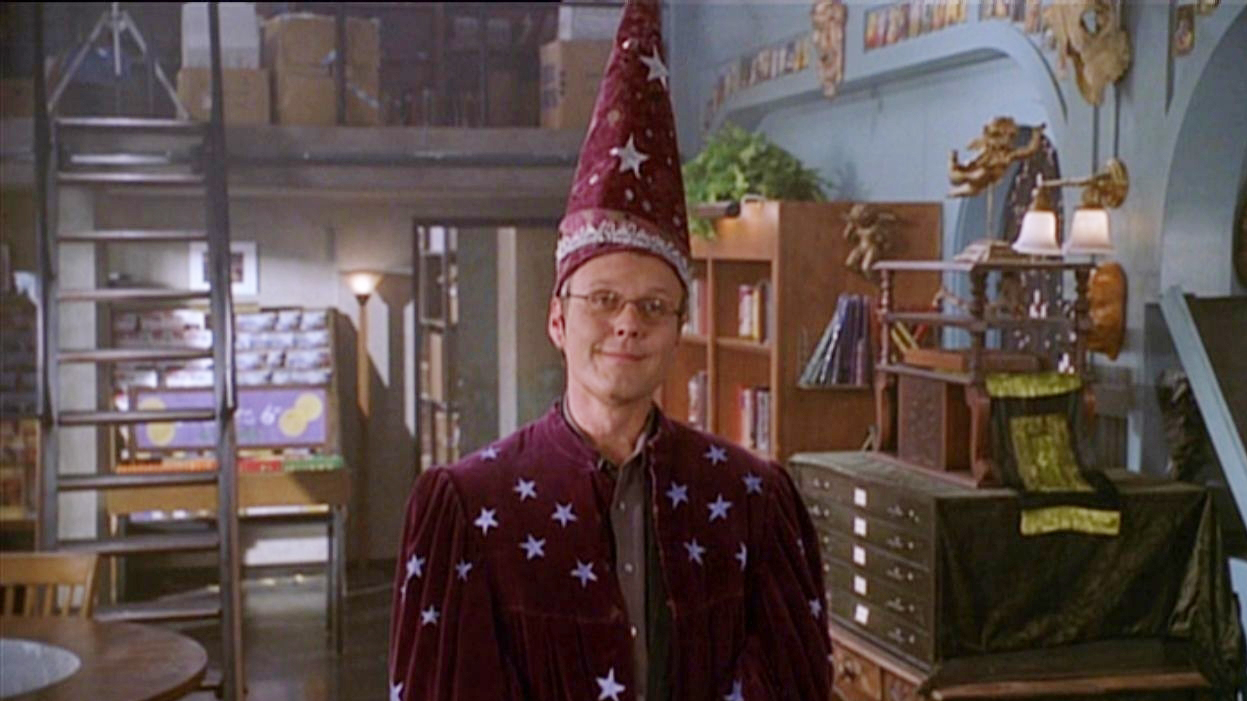
I am the Dark Lord of nightmares, the bringer of terror
If a fantasy series set in high school was a tough sell, the fact that it was also part of the horror genre was arguably even harder. Nowadays the horror TV genre is thriving with shows such as Supernatural, Penny Dreadful, and American Horror Story proving that mainstream audiences love a good scare, but all of them have a debt to pay to Buffy. “It opened the door to a whole new generation of TV horror and the potential of television to be a site of the horror genre, which obviously today is now running rampant,” says Abbott. “It’s now so popular, and I don’t know that we would have it if it weren’t for a show like Buffy.”
Buffy was one of the first times that a series aimed at a young audience was actually genuinely terrifying, and while not every episode is mind-numbingly scary, the ones that are really hit you where it hurts (I’m thinking of Hush - god, the nightmares!). This was a bit of issue for networks who weren’t hugely comfortable with the horror genre, something made very clear by the fact that Buffy’s premiere started with this disclaimer:
The following two-hour world premiere is rated TV-PG and contains actions scenes which may be too intense for younger viewers.
“It was a gamble because that kind of fantasy TV wasn’t necessarily considered acceptable,” explains Abbott. But a gamble that obviously paid off: “I don’t think that it’s a coincidence that Supernatural started in 2005… two years after Buffy finished and a year after Angel went off the air, and Supernatural is still on the air.”
And it wasn’t just the monsters that made Buffy unusually dark viewing. The fact that the heroes don’t always win - a recognisable Whedon calling card now - was new territory for mainstream audiences and one which they needed to be eased into. Firefly’s Nathan Fillion says it better than I ever could in the foreward for Geek King of the Universe:
“My generation, we were kind of raised on the super-cool, ‘I can handle anything’ with a gun in his hand hero. Any situation you throw at him, he can handle it - with catchphrases. It was very cool. But Joss Whedon’s version of a hero doesn’t always win. He loses more than he wins, and when he wins, the victories are tiny, but he takes ‘em. ‘That’s a victory! I call that a victory!’ It’s a tiny victory - he takes it, and that’s what he walks away with. And that’s something I can actually relate to. That’s something that people can relate to - because that’s actually life.”
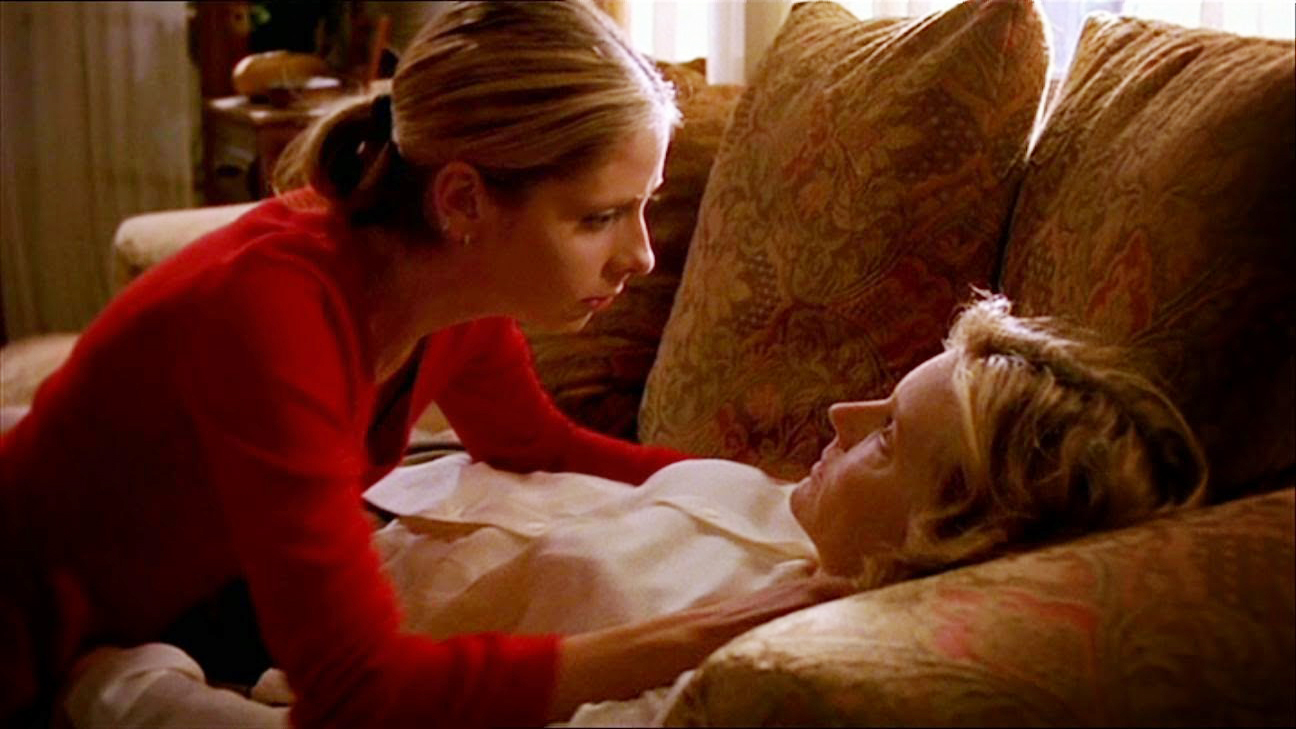
This is a familiar theme in Buffy, but it's never so explicitly said than in season 3’s Gingerbread. After two children are found dead in a park, the residents of Sunnydale decide enough is enough and instigate a witch hunt with dire consequences. It turns out that the dead ‘children’ are actually a demon who feeds off a town destroying itself and Buffy eventually wins the day, but there’s one point in the episode where her mum, Joyce (who knows she’s a Slayer by this point), makes her question her effectiveness.
“My mum said some things to me about being the Slayer,” she tells Angel. “That it’s fruitless.” He tells her that her mum’s wrong, but Buffy questions if that’s true: “Is Sunnydale any better than when I first came here? Ok, so I battle evil but I don’t really win. The bad keeps coming back and getting stronger.” Angel tells her: “We never will. That's not why we fight. We do it because there's things worth fighting for.” This is a lesson Whedon emphasis again and again in Buffy, and indeed in his other shows, and it makes for incredibly rich characters. Something which shows such as Orphan Black, Lost, the rebooted Doctor Who, and the MCU have benefitted from. “I think it [Buffy] set a tone for that sort of expectation, that characters evolve in that way…” says Abbott. “There’s this family quality to the Avengers, but… they will have fallings out, and they will not get along or there will be feuds - and that’s in Buffy as well - that you see the tensions arise.”
His characters are flawed and they question. They don’t get days off for heartbreak or real life. They have to deal with it at the same time as saving the world. They make mistakes and, sometimes, they’re even the reason the world is in jeopardy, but they keep fighting anyway. Why? Well, usually it’s for the people they love, which leads us nicely onto another TV and movie trend which has roots in the Buffyverse; the ensemble cast.
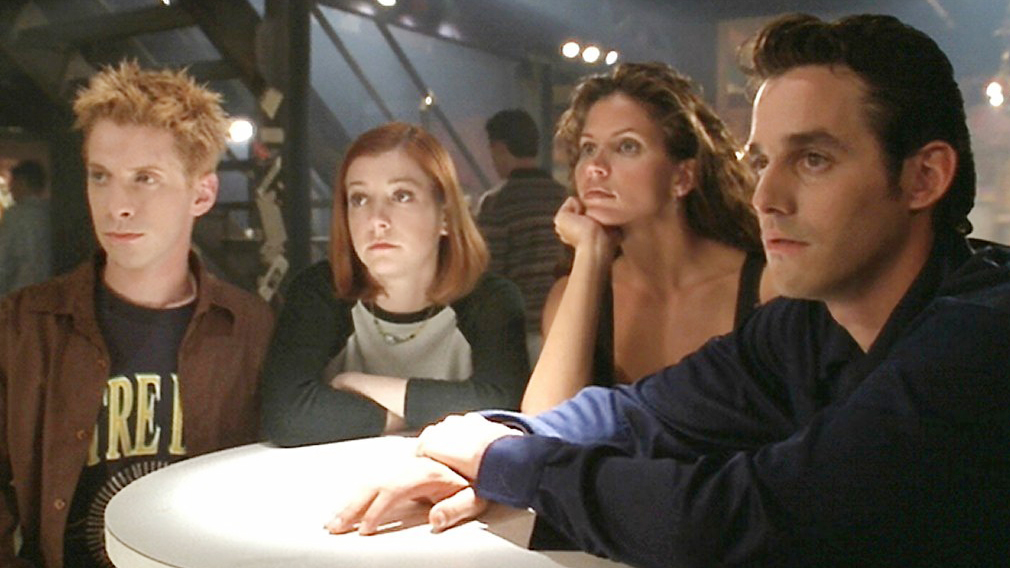
We’re family
The ensemble cast is hailed as king in today’s world of television and cinema. Long gone are the one man army-type action movies and solo TV dramas, instead we have shows like Lost and Game of Thrones and movies such as the new Star Wars films and the MCU where each character is part of a wider group, but still has their own individual importance, background, and story. Abbott explains that Buffy was clearly designed as an ensemble from day one: “This is not a show about a singular hero even if she is ‘the Slayer’. It’s about teamwork and family and I think family was, from the start, always very important to what they were trying to do with the genre, in saying that actually it takes more than one person to fight these kinds of battles.”
Up until this point the ensemble cast had mostly only been associated with soap operas, which came with certain negative connotations. Ok, there was Star Trek, but really Star Trek just has a very big cast of which about two or three are the main characters who the story is always about. Buffy was one of the first shows which gave every single one of its characters a realistic and engaging role. “All of the characters are very richly written and given quite a bit to do even if they aren’t the central four characters in the first episodes,” says Abbott. “There was a real sense of not wanting to short change any of these characters, and that the strength of these shows [Buffy and Angel] comes from the richness of writing them all as three-dimensional personalities with their own histories, their own development, and their own flaws as well.”
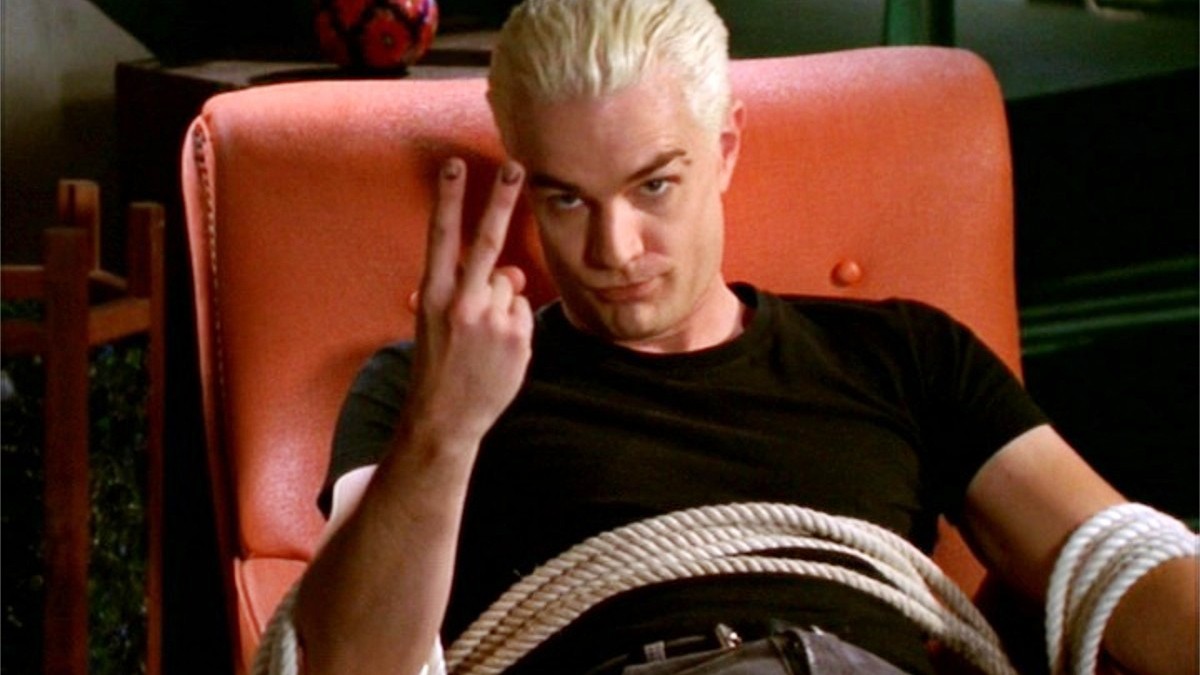
This richness of character which Whedon and his co-writers wouldn’t compromise on also contributed to the growing popularity of the TV story/character arc, which shows like The X-Files and Twin Peaks had started. Buffy was one of the first shows to have an overarching storyline which developed throughout the whole season from day one. While we’re used to this way of storytelling now, at the time TV was still very episodic. Abbott explains: “One of the things that I think Buffy did to really stand aside [from other TV shows] was to have a narrative that hooks you by having your ‘monster of the week’ narrative… but they also built in an arc narrative over seasons which had a… very emotionally rich storyline.”
In season 1, not only do Buffy and the gang deal with witches on campus, hyena possession, and an invisible girl, but they also have the overarching threat of the Master who debuted in the first episode, appeared throughout the season, and was the focus of the finale. “We’ve developed the whole term ‘The Big Bad’ from the idea that yes, you can have episodic monsters, but there’s always a bigger villain that she has to fight,” says Abbott. This method of storytelling also assumed that the audience has a memory.
Instead of each episode ending with everything exactly the same way it started to allow for next week’s story (The Simpson’s likes to joke it does this all the time), Buffy assumed its audience could follow the evolution of a story or a character not just throughout a season, but across multiple seasons. Like when Faith and Buffy are reunited in season 7 - it’s such a simple scene and yet fans understand every facial twitch and awkward glance that passes between the pair because they know their story. “People talk about shows like Game of Thrones being complex TV and it is, but I think a lot of that idea of talking to your audience and assuming they’re smart was something that Buffy did,” says Abbott. “It did not assume that the audience was stupid, but actually started to give the audience credit to say ‘Actually, you’re going to remember, you’re going to engage, and you’re going to make those connections from season to season’.”
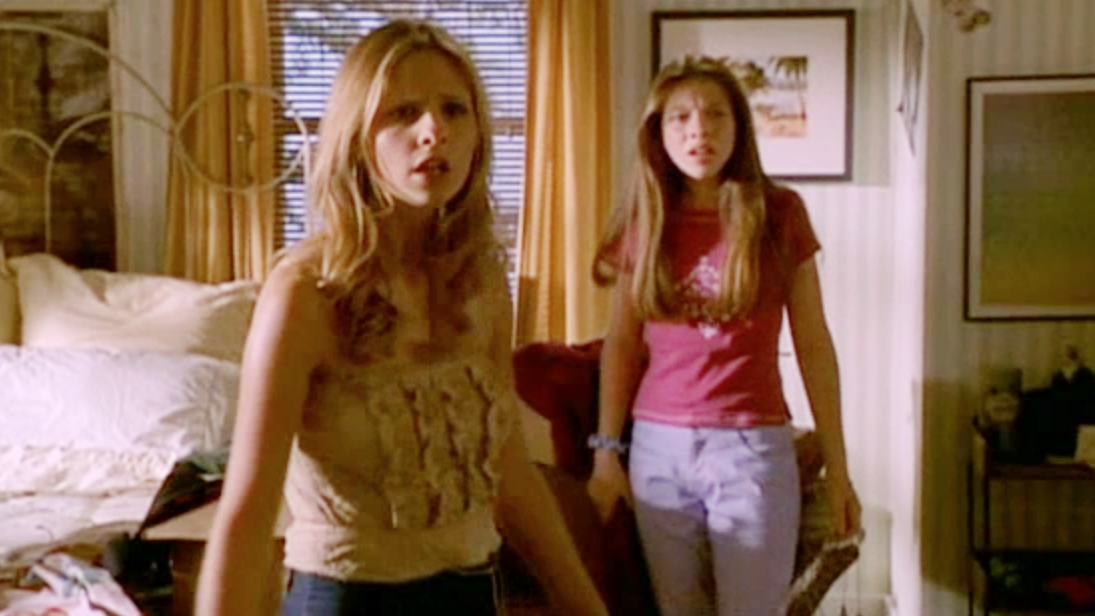
Her abuse of the English language is such that I understand only every other sentence
Of all the things Buffy gave us, its quick-witted, fast-paced dialogue is perhaps most recognisable simply because there’s nothing quite like it. Whedon gave us many a Buffyism that still infects the language of fans today and is quoted the world over - “Morbid much?” - but it’s not actually as original as most people believe. True, the Buffy writers would eventually evolve their own completely unique form of language (something few TV series ever manage), but when Buffy first started, the unusual way the young characters spoke was actually based on a mixture of ‘80s California Valley speak and the Buffy writers’ own pop culture references. “It was definitely responding to a kind of moment where there was this popular interest in the sort of strange way that some teenagers talked,” says Abbott.
But more than the actual language of the characters, the fast-paced witty and humorous dialogue is a hallmark of the show and one which can be almost completely laid at Whedon’s feet. It’s no secret that Whedon didn’t have a great time during high school and he found his quick wit and jokes an effective defence. This is something which many of his characters possess, but particularly Xander who wielded his wit in the same way Buffy did her stake or Willow her spells. Actor Nicholas Brendon believed the same and went as far as to say: “I think Xander’s power was the most extraordinary because it was wit. The tongue is mightier than the sword, my friend,” in SFX magazine in 2003.
The fact that Buffy was also incredibly funny while dealing with such dark subject matter was pretty unusual at the time, and even to a certain extent today. “I don’t really feel like anyone’s done it in the same way that they did with Buffy,” agrees Abbott, but one show which does jump to mind is Veronica Mars - the story of a high school girl turned private eye starring Kristen Bell. There’s a strong Buffy influence in Veronica Mars, mainly because writer Rob Thomas was such a fan, but also because his writing style is so similar to Whedon’s. You can see it in his new show iZombie as well - not only do both shows have similar Buffy-esque leads, but they both deal with serious themes outside the mainstream genre. “I would say they both have a certain use of dialogue that’s similar; very sharp, very witty,” says Abbott. “Not necessarily creating its own language… but it has a sharp, witty dialogue.” Wilcox agrees: “[What’s] significantly different about Whedon… is he was able to combine the brilliant wit with a long-term mythically significant narrative that was underlying the shiny surface of the language. He had both of those things going on at the same time.”
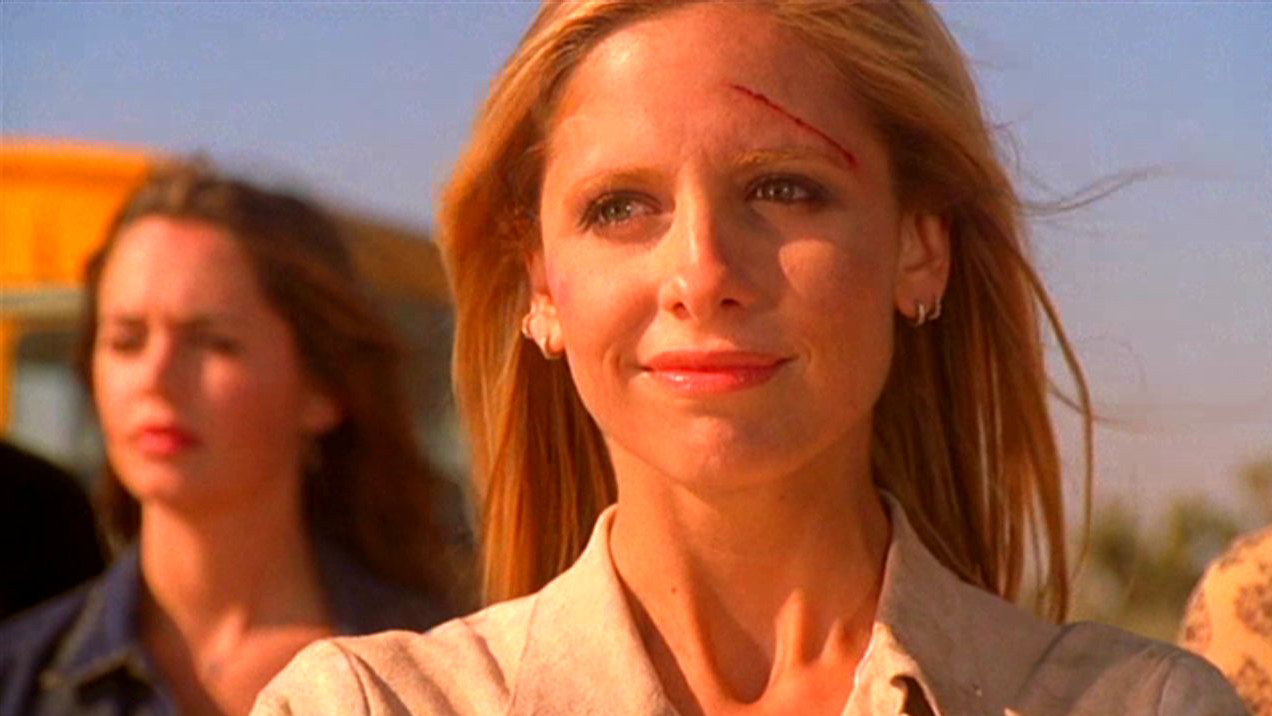
No matter how others have tried and failed to emulate the dialogue of Buffy, there’s no doubting its significance, which has led to a kind of worship of the Buffy writers in a way that’s fairly unprecedented. Pascale touches on it in her Whedon biography, saying: “[Buffy writer, Jane] Epsenson has mentioned how Buffy fans, more than any other fans she’s encountered, indulge in the ‘cult of the writer’. Many writers from the show continue to be showered with affection from fans due to their work on Buffy, which doesn’t tend to happen with scribes from other series.” Do you remember the last time you sought out one of the script writers from your favourite show to shower them with praise? Because I can’t, and while it’s true that the writers, perhaps more than anyone, are the ones we have to thank for our much-loved movies and TV, they’re often overlooked by fans.
When looking for the influence Buffy’s writing has on today’s cinema and TV, you need look no further than the shows which its writers went onto make. Epsenson says: “He sent us all out into our subsequent jobs asking, ‘What’s this story really about? Why are we telling this story? What is the emotional impact of this story on the main character? How is our hero taking a heroic action?’ So in that way, certainly, the Buffy Way has spread.” Epsenson alone has gone onto work as a writer and producer on shows such as Battlestar Galactica, Torchwood: Miracle Day, Gilmore Girls, and Once Upon a Time, and while you can see the influence her time on Buffy has had on these other popular series, she’s by no means the only one. David Greenwalt went on to write and produce Grimm, Marti Noxon did the same for Mad Men and Grey’s Anatomy, Steven S. DeKnight worked on Smallville, Spartacus, and most recently Daredevil (the awesome Netflix original, not the dire Ben Affleck-starring movie) and all of them were part of the original Buffy family.
Ultimately, one of the reasons Buffy had such an impact on a generation of movies and TV is down to it’s popularity. Simply put, the industry will not pay attention to something which isn’t successful (AKA making money) because that’s the goal of TV networks and movie studios. It would have been easy for Buffy to have stopped at a couple of really good, but relatively niche seasons, but it didn’t. It lasted seven seasons (not as unusual today, but certainly impressive for the time), it spawned a spin-off show that would run for five years, it has a comic book series that is still telling its story, its characters have been quoted on news programmes, its themes are studied in universities around the world, and more than 20 years later, we’re still talking about the Chosen One. A 16-year-old girl who just wanted a normal life but fought monsters because it made the world a better place.

Lauren O'Callaghan is the former Entertainment Editor of GamesRadar+. You'd typically find Lauren writing features and reviews about the latest and greatest in pop culture and entertainment, and assisting the teams at Total Film and SFX to bring their excellent content onto GamesRadar+. Lauren is now the digital marketing manager at the National Trust.


